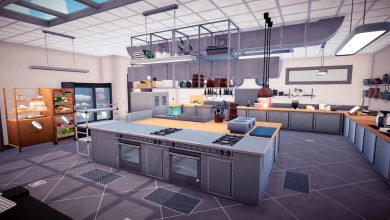They have been dealing in several product categories, but for one being popular is the Power supply. The Enthusiastic line which named as Strider series, has given SilverStone more success than any other series. Comes in various levels that includes Strider Plus, GOLD S, Evolution, Platinum and newest Titanium. The Titanium, in particular, is newest rank in certification is the most power efficient power supply to date. However, we will focus on Strider Platinum series unit.
Sirfa Electronics Co., Ltd. is a name that is not that familiar to most users but Sirfa has been around since 1996 when Sirtec established Sirfa as a factory in the Sirtec group on mainland China. As such, while we have not seen any Sirfa produced power supplies under the Sirfa brand, some of the Sirtec units of the past were produced at the Sirfa facility. Additionally, we have seen Sirfa providing OEM services for Thermaltake, Enermax, PC Power & Cooling, Tuniq, Lepa, SilverStone, and others with very mixed results; sometimes good, sometimes bad.
Today, we are looking at the SilverStone Strider 650W Platinum PSU. The unit comes in a 650W capacity, has 80 PLUS Platinum certification that gives around 90-92% efficiency in power draw. It has rated Ampere at 54.2A that makes the rated power delivery at 650W on a single +12v rail. A compact design PSU is 140mm that makes it one of the smallest PSU in the market.
The Unboxing and Content
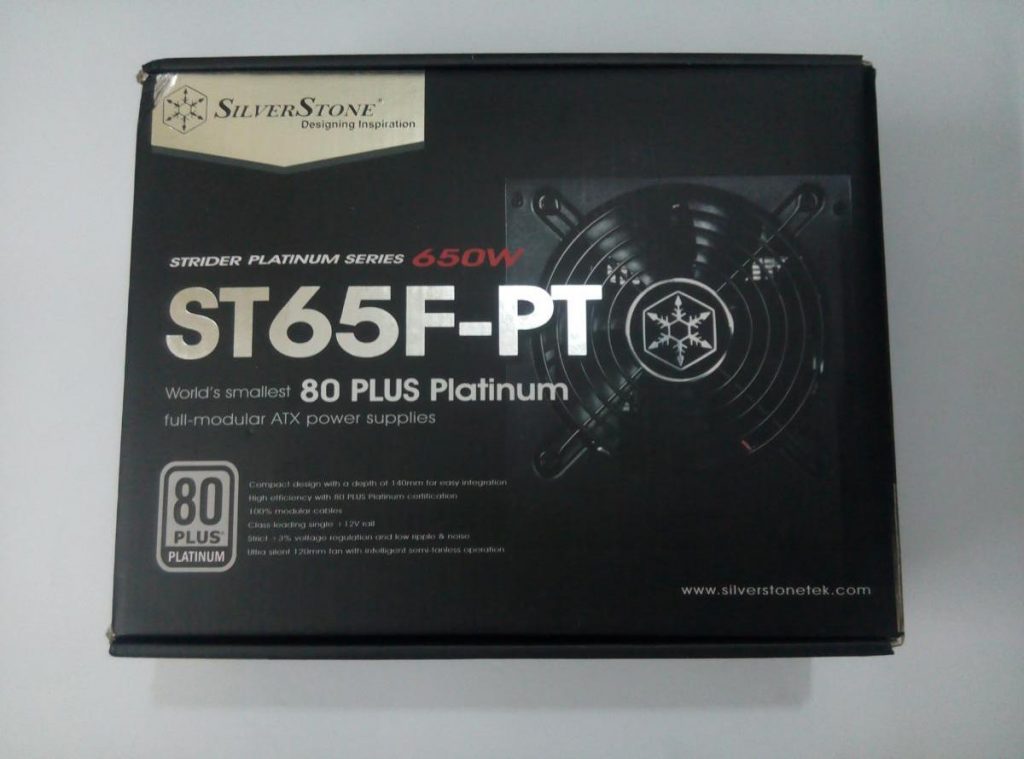
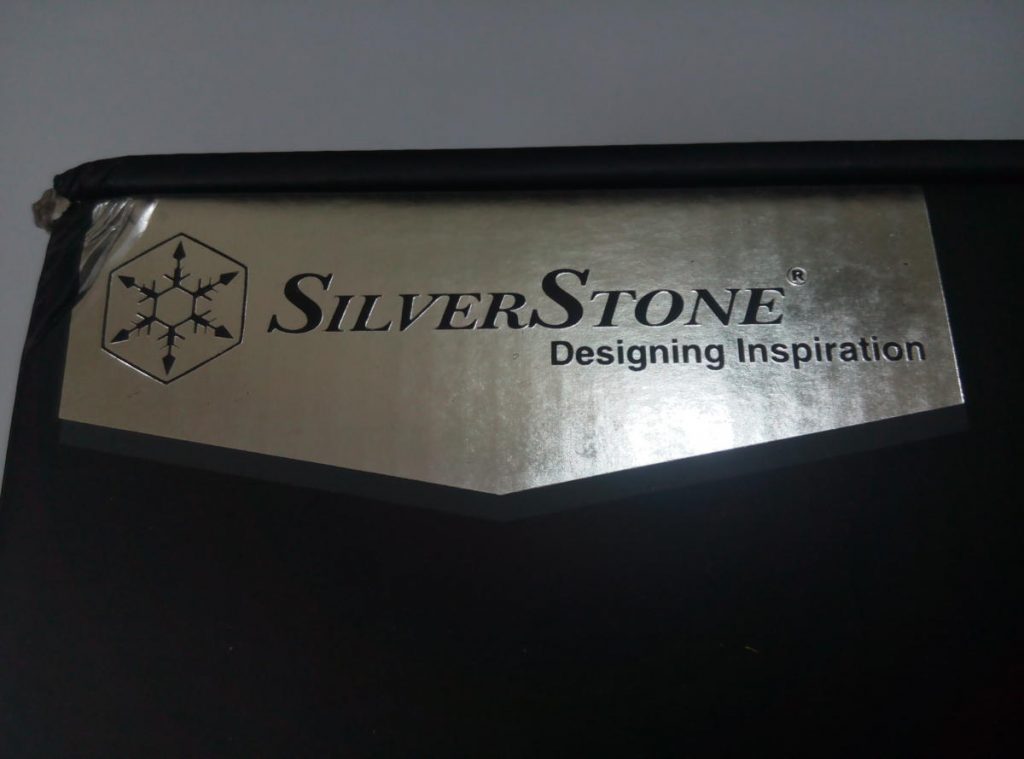
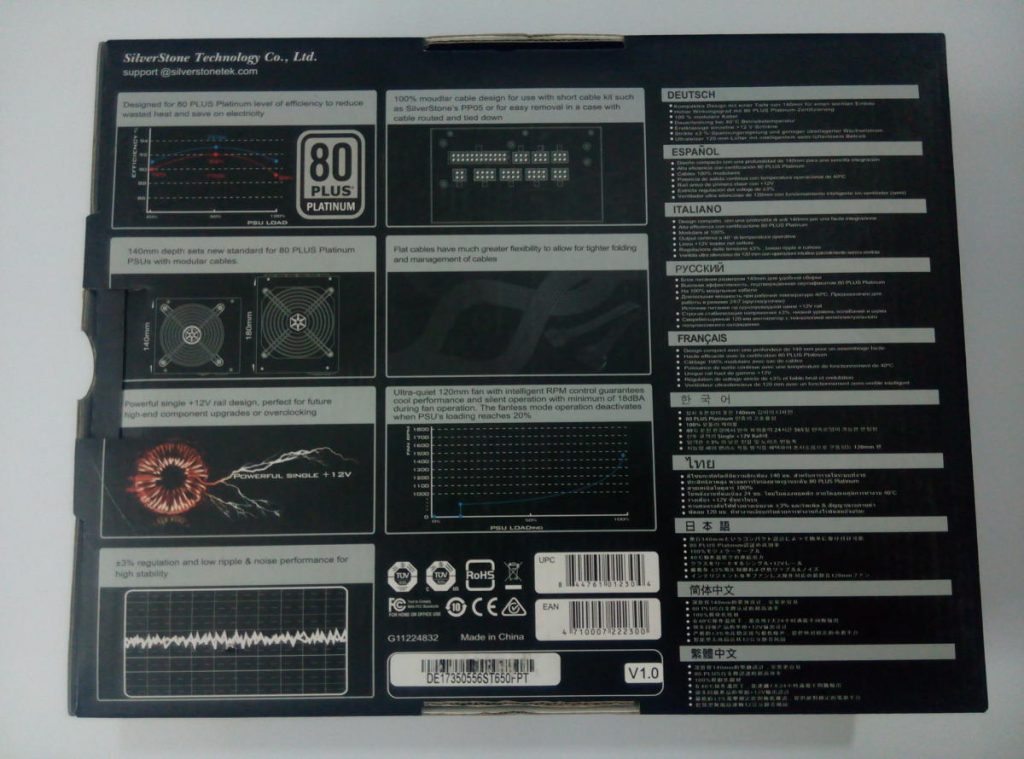
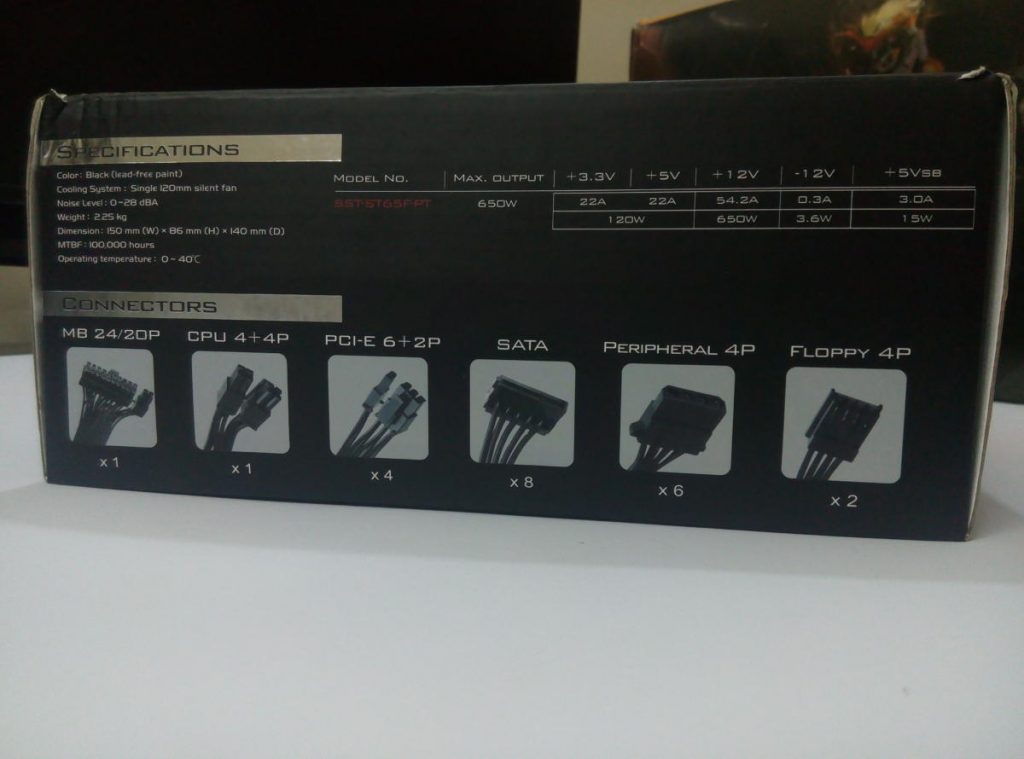
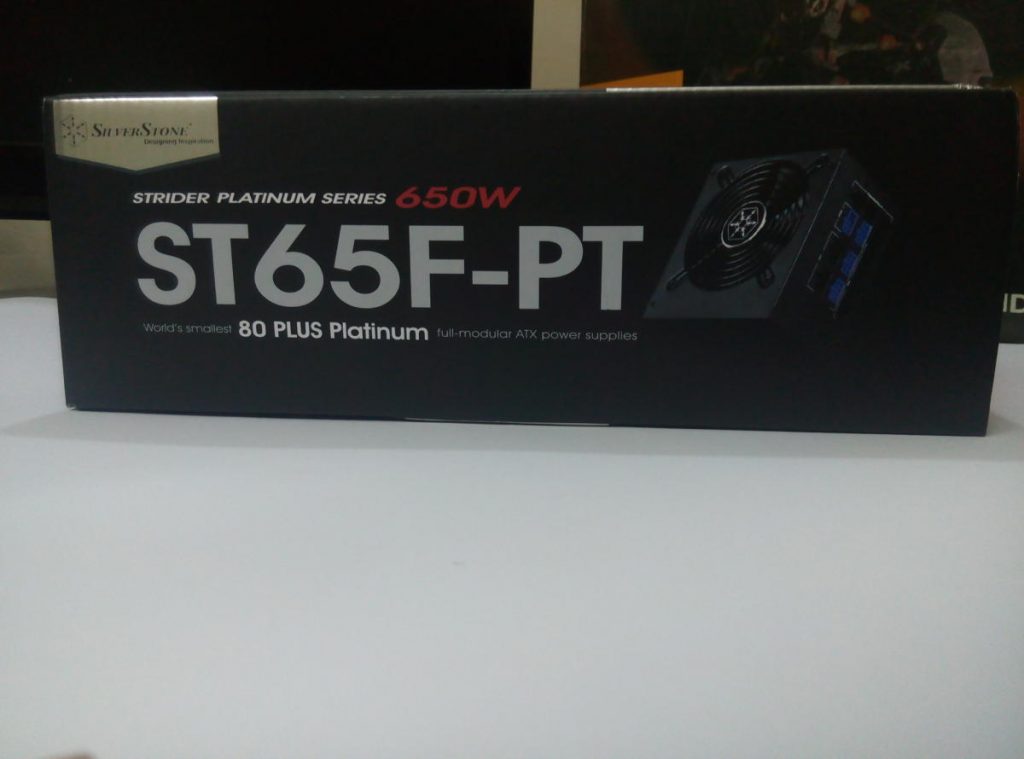
One of the sides has the general Specs and power rating. While there are also Cables and connectors detail with images. A predefined way to memorize the cable length and quantity.
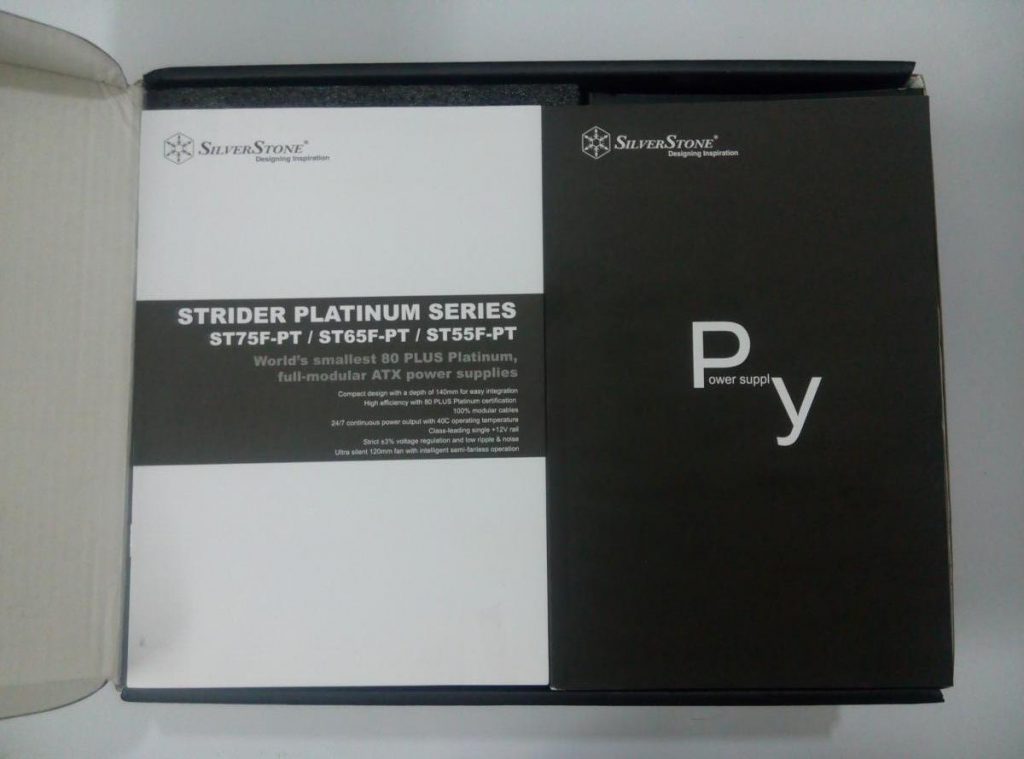
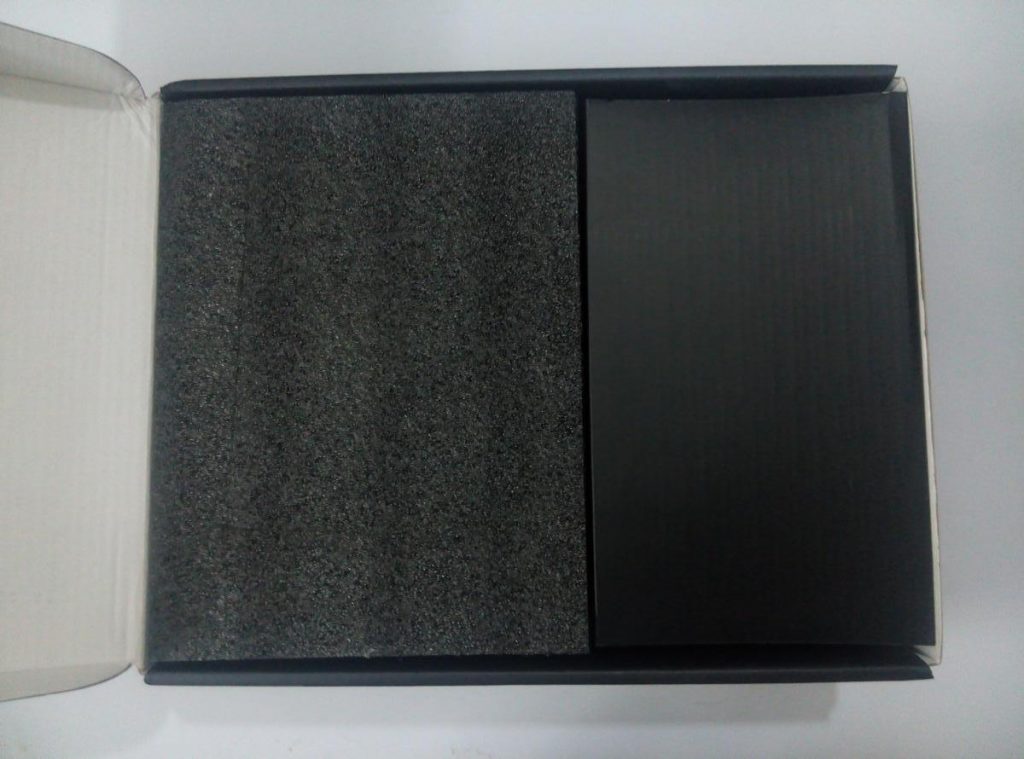

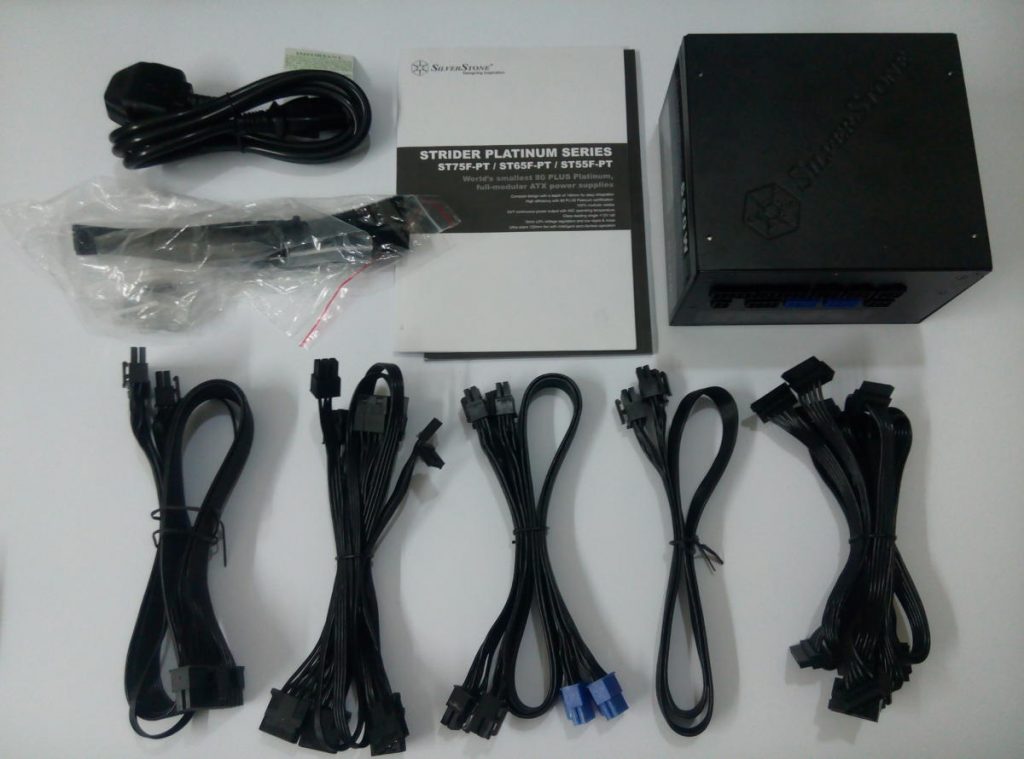
Once we open the box, we have a couple of manuals placed right at top and then there is protection layer on top of the PSU. The foam is being used as a protection layer for power supply. Removing the protection foam, we witness the PSU packed in a plastic bag, then Attention notice yellow stricker saying remove before use, wrapped on PSU. The cables are placed right next to it, cord cable being on top.
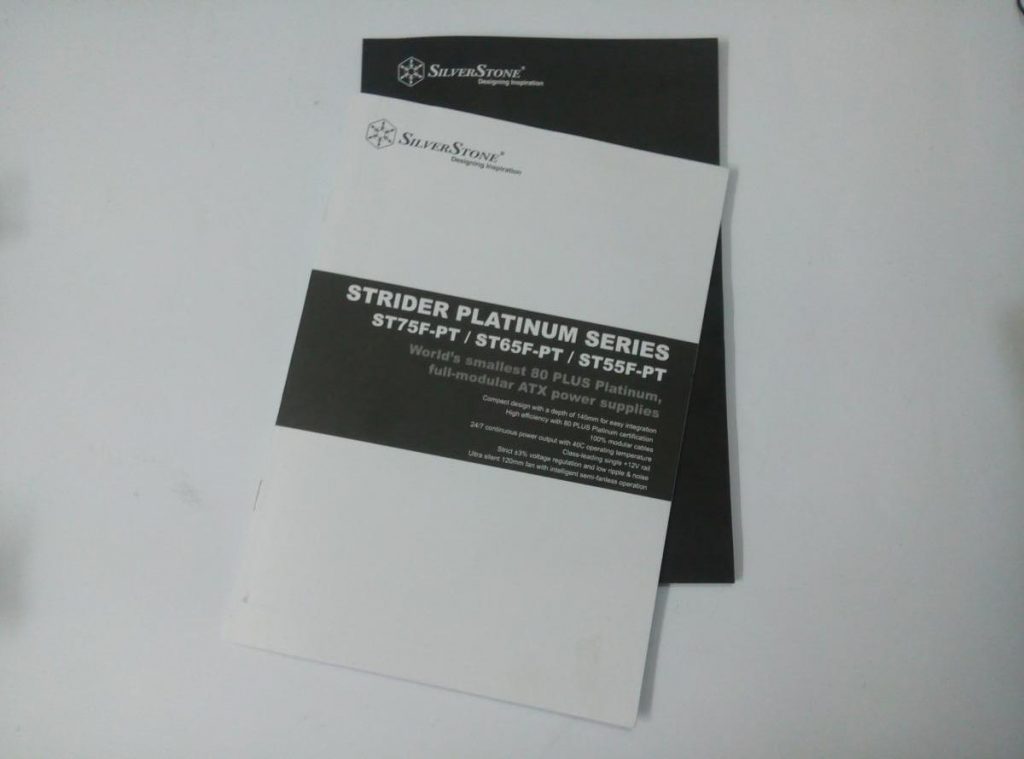
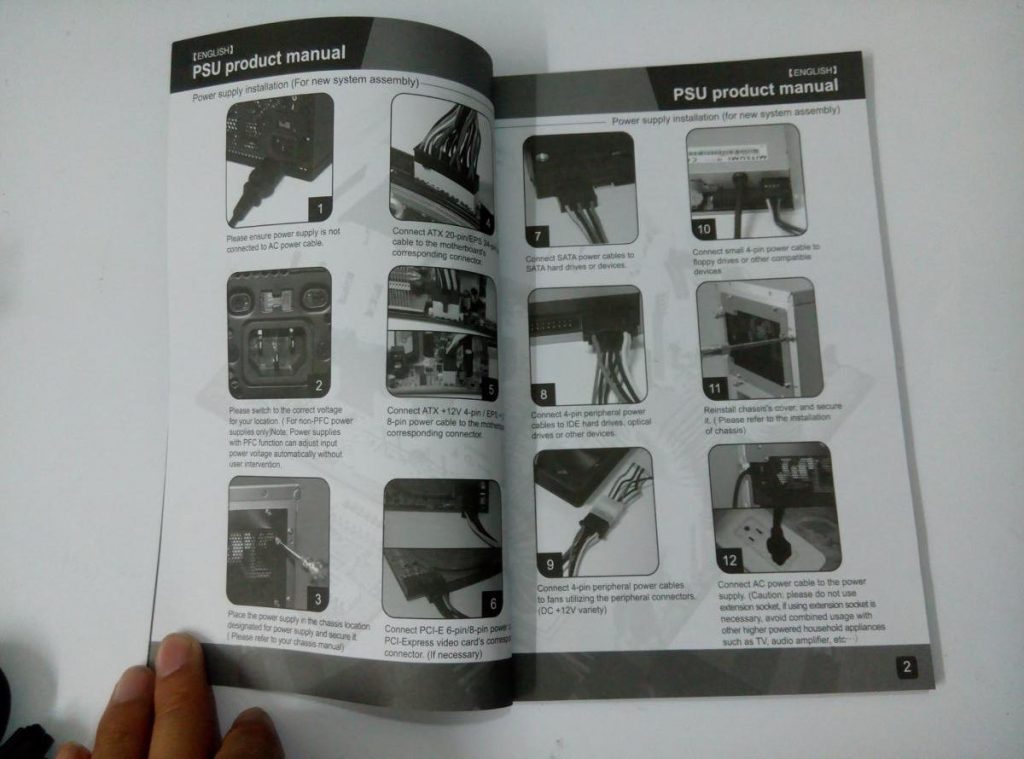
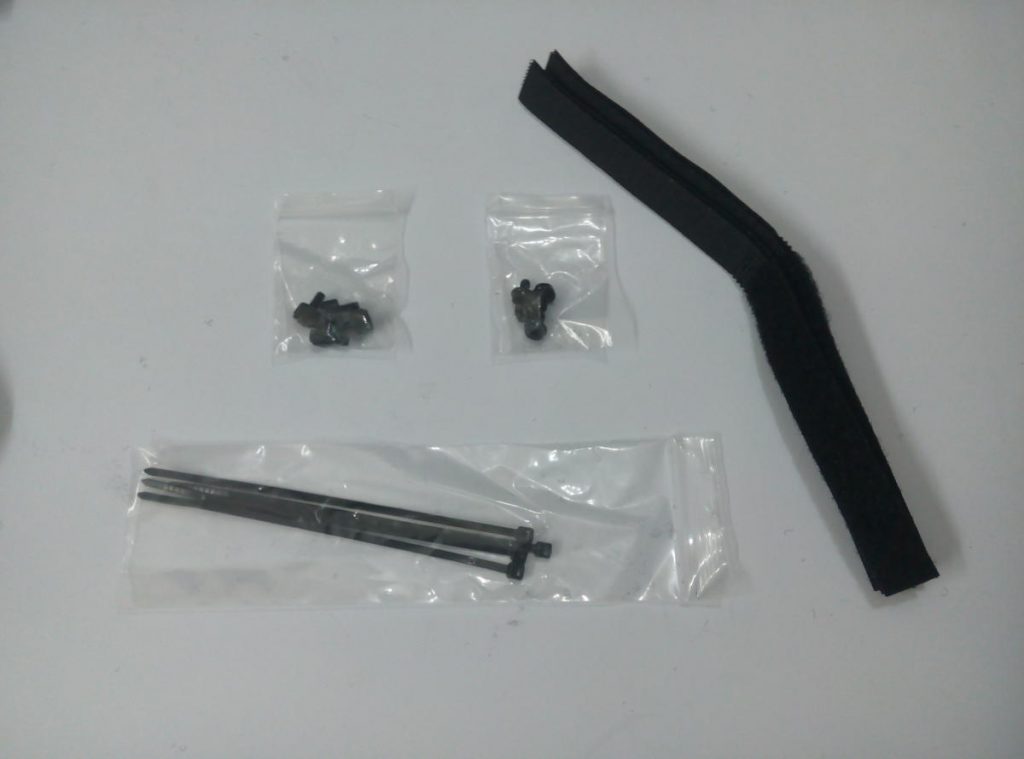
The extras are the manuals and a plastic bag contains long Zipties and a small bag of PSU screws. Additionally, it also comes with Screws used in expansion slot for GPU. Interesting!
The following items you will get in ST65F-PT package:
- PSU itself
- Modular cables
- Cord cable
- Manual
- Zipties & Screws
Cable and Connectors
The Power supply is a complete modular, so we have all the modular cables come with it. All the cables come with the power supply are flat in nature. The Flat design of cables has now been new standard for PSUs. In this design, each wire is separately coated in a plastic rubber layer, so called flexible flat cables. Flat cables are also discerned and appreciated by majority of the PC builders. One of the major advantage of cables being flat, is the ease to manage. There was time when we were dealing with beefy sleeved cables, that only brought more hard work and difficult to handle.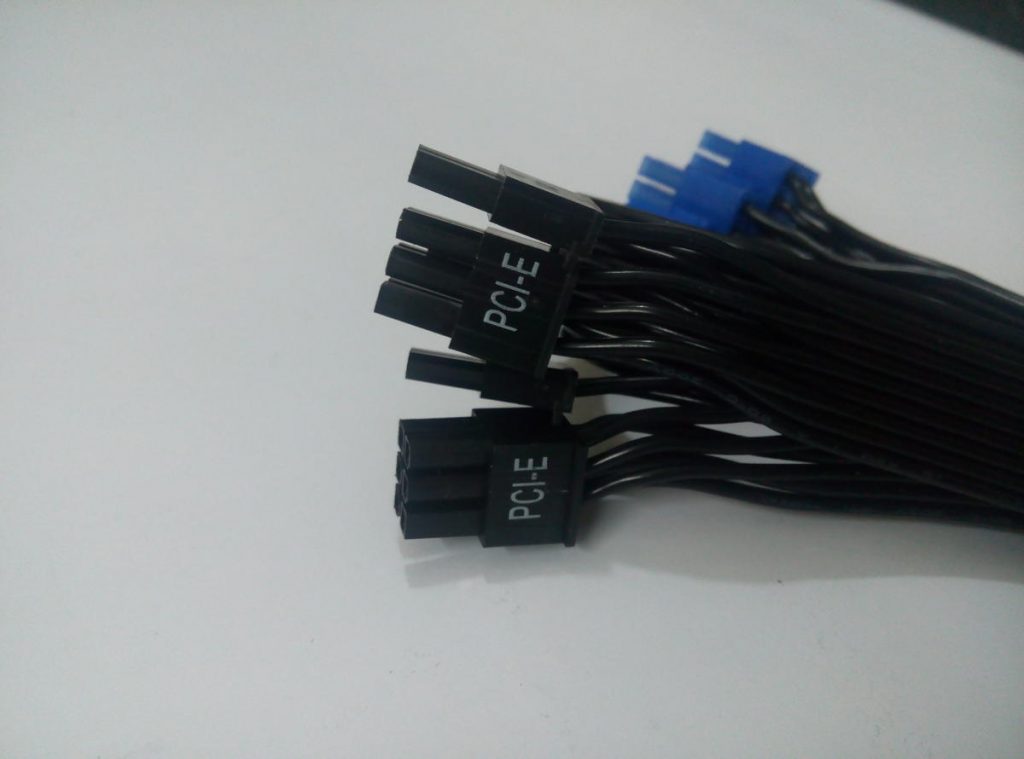
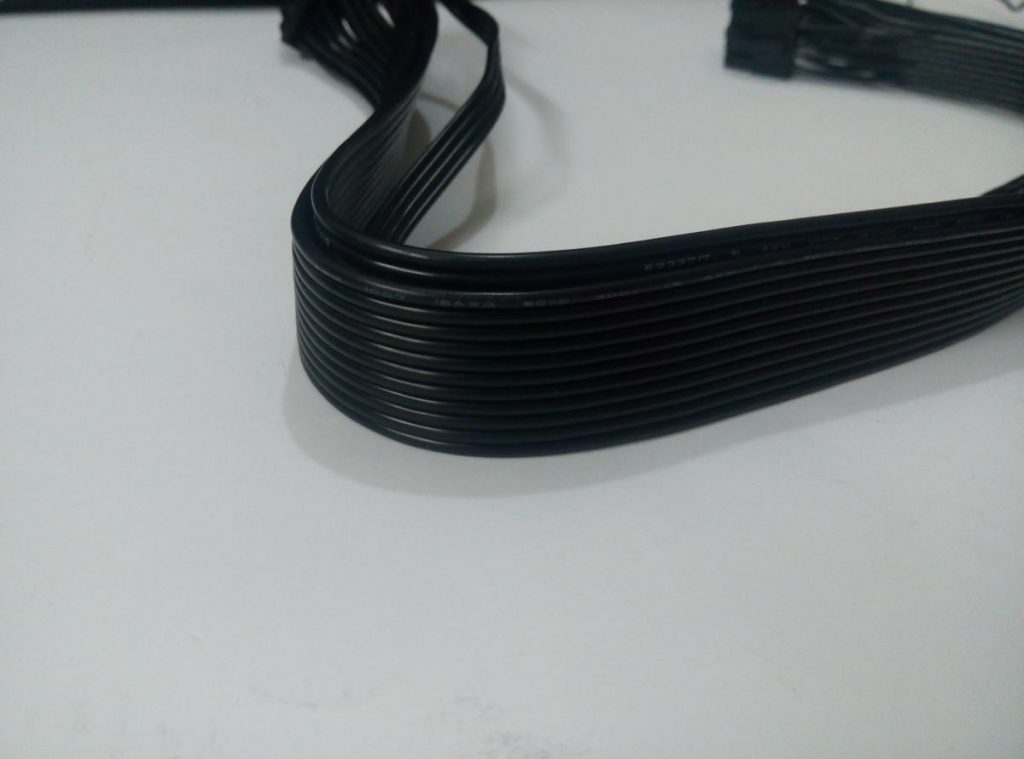
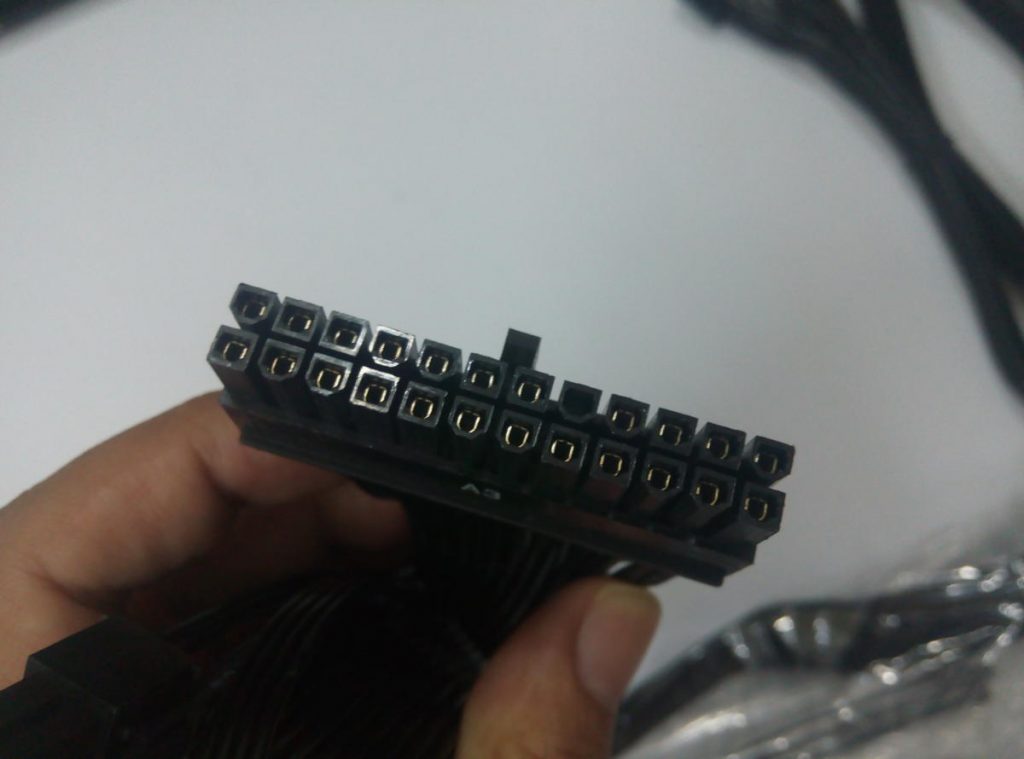
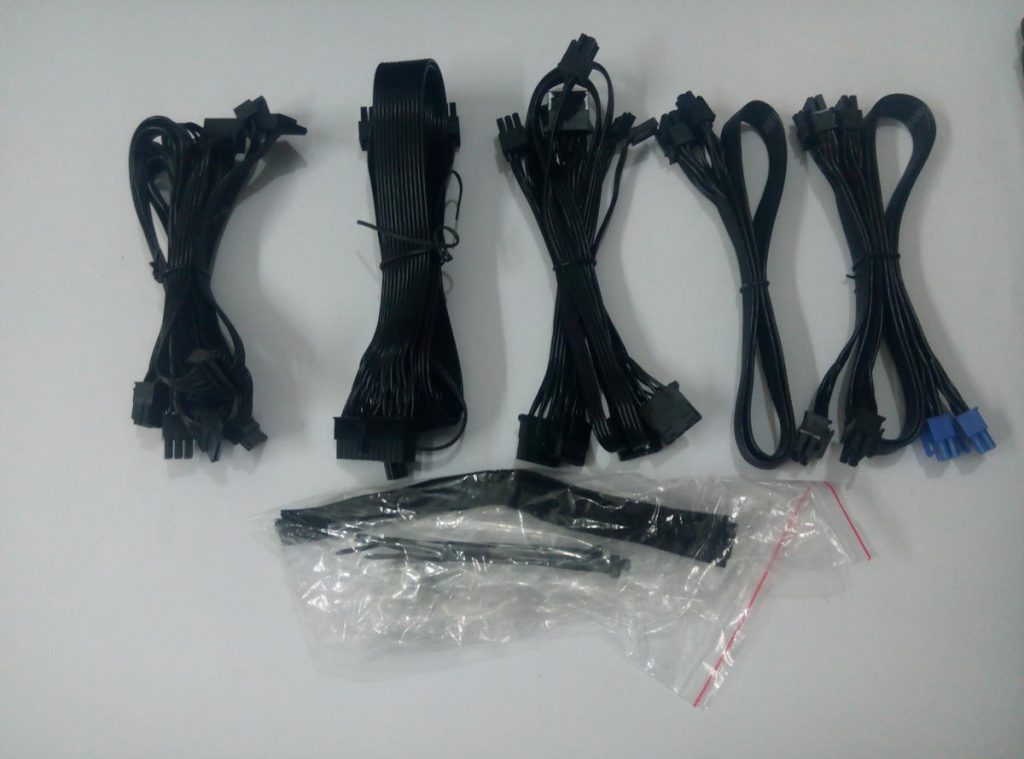
The list of cables comes with the PSU:
- 1x 24/20P ATX Cable
- 1x 4+4P CPU cable
- 4x 6+2P PCI-E Cable
- 8x SATA Cable
- 6x Peripheral Cable
- 2x 4P Floppy Cable
Design: Exterior
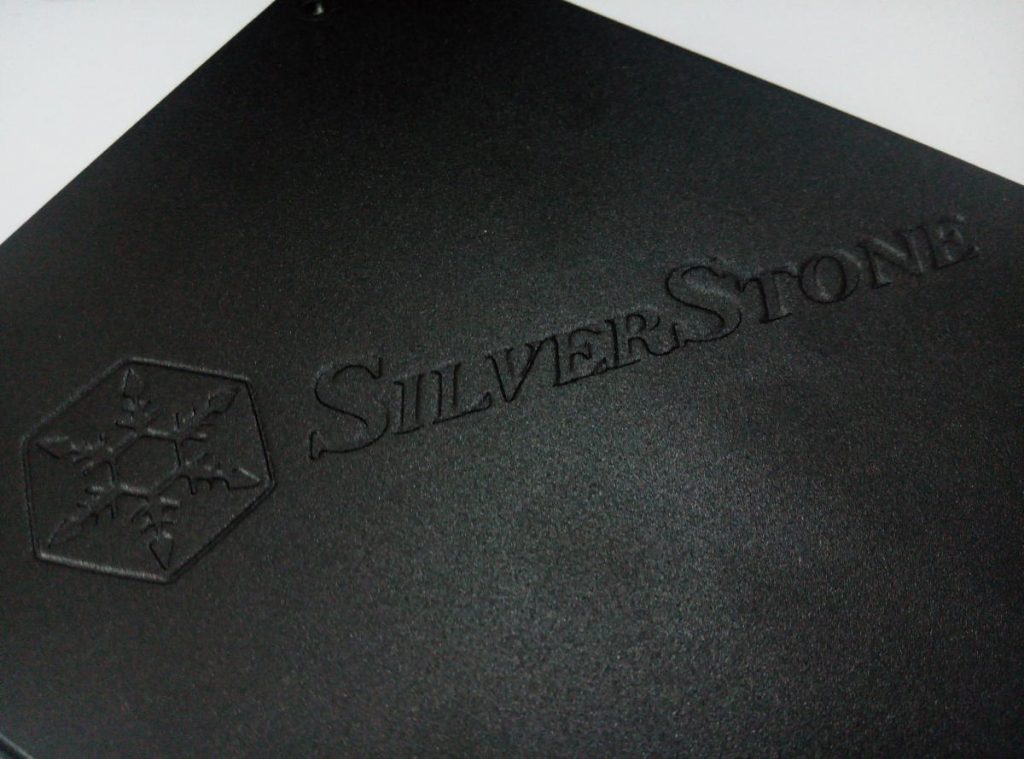
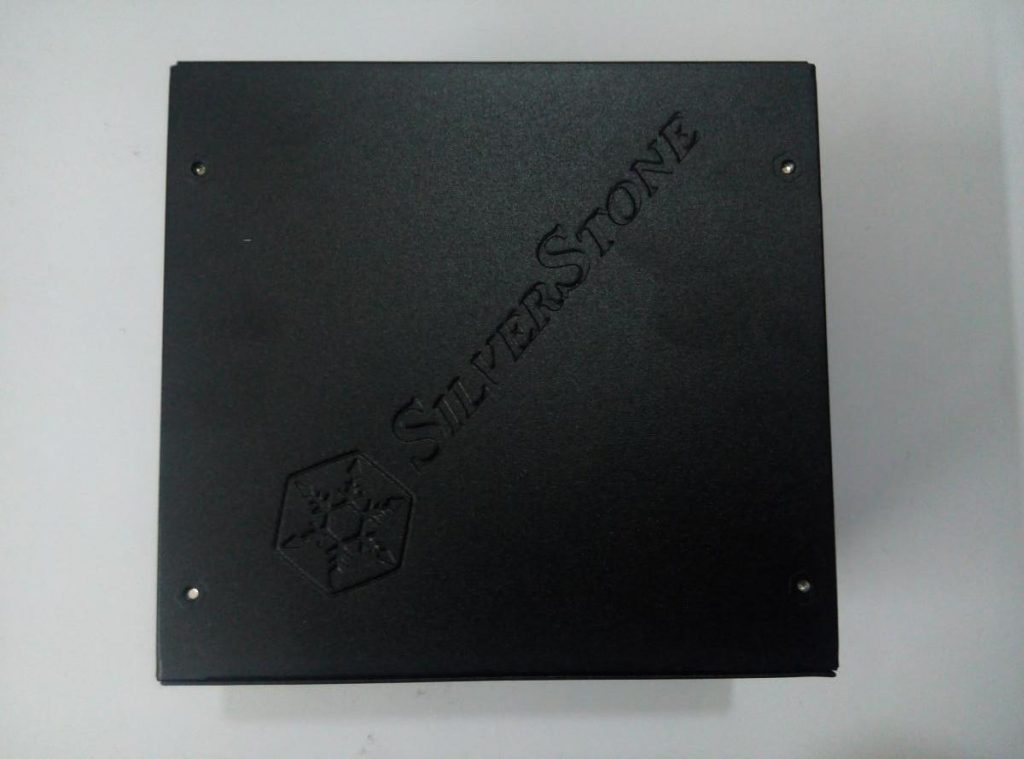
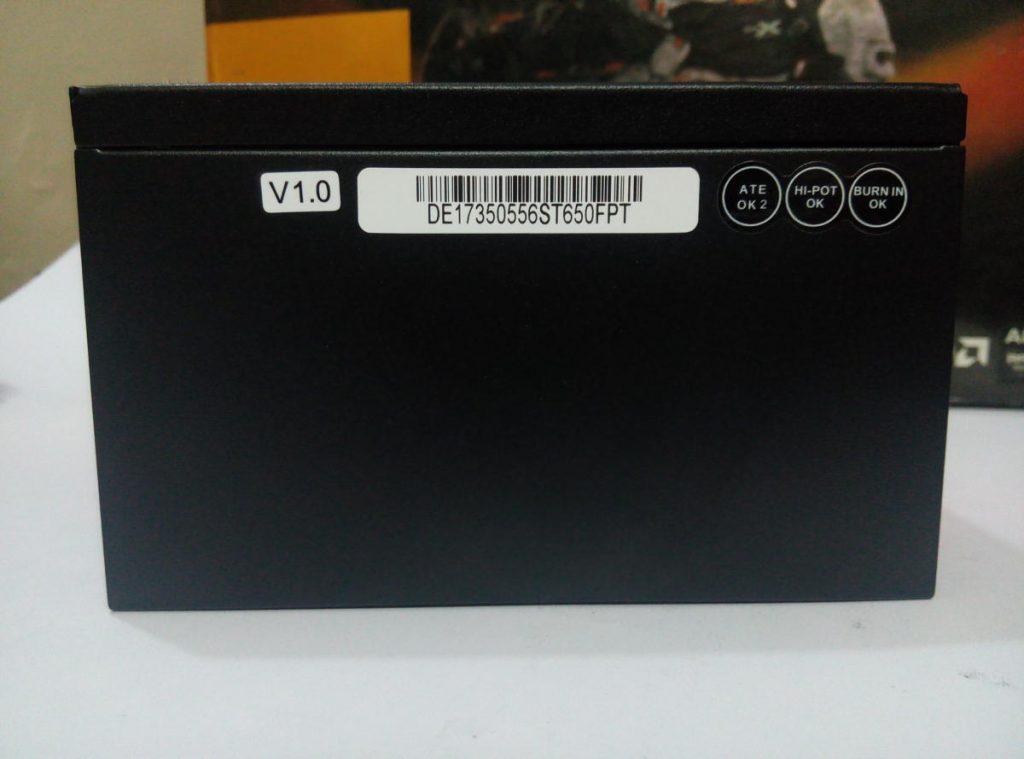
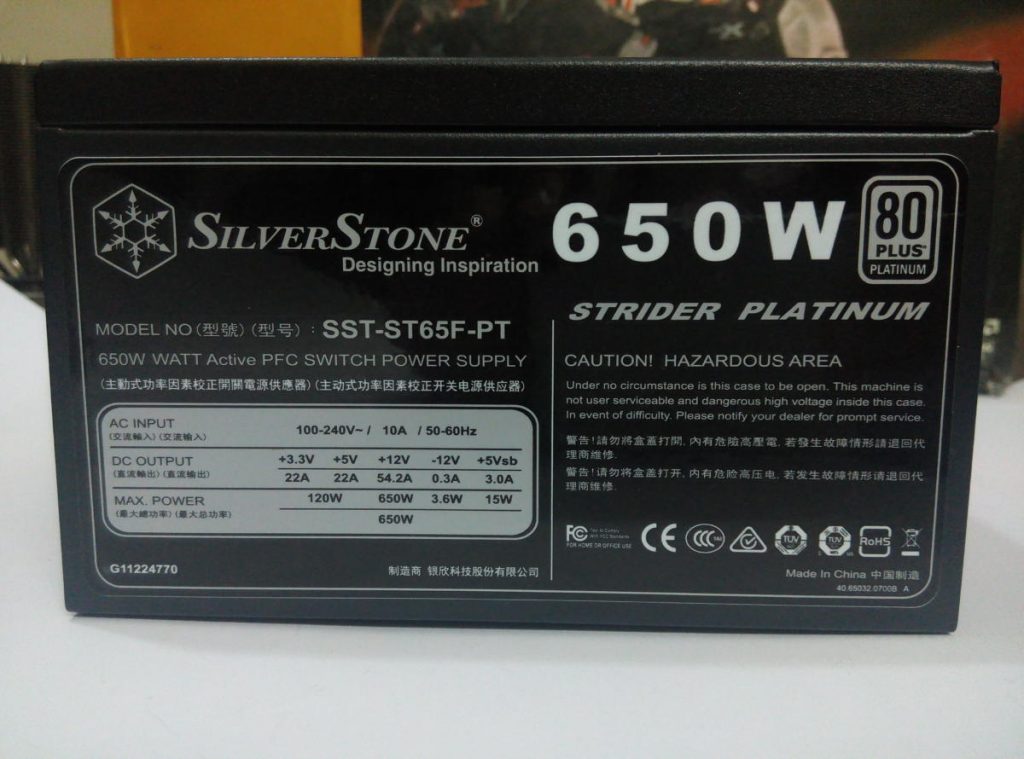
On one of the side, there is a huge PSU label, which is quite detailed. The truth is, no one bother to read out that much detail from the label, except the power ratings and little precautions. The most important aspect to look at is the DC output specification. It has single rail +12V that outputs 650W by utilizing 70.8A. So theoretically, we have a true continuous 650W power supply. The other side has a few stickers, one with barcode and other ones on right are probably test verified.
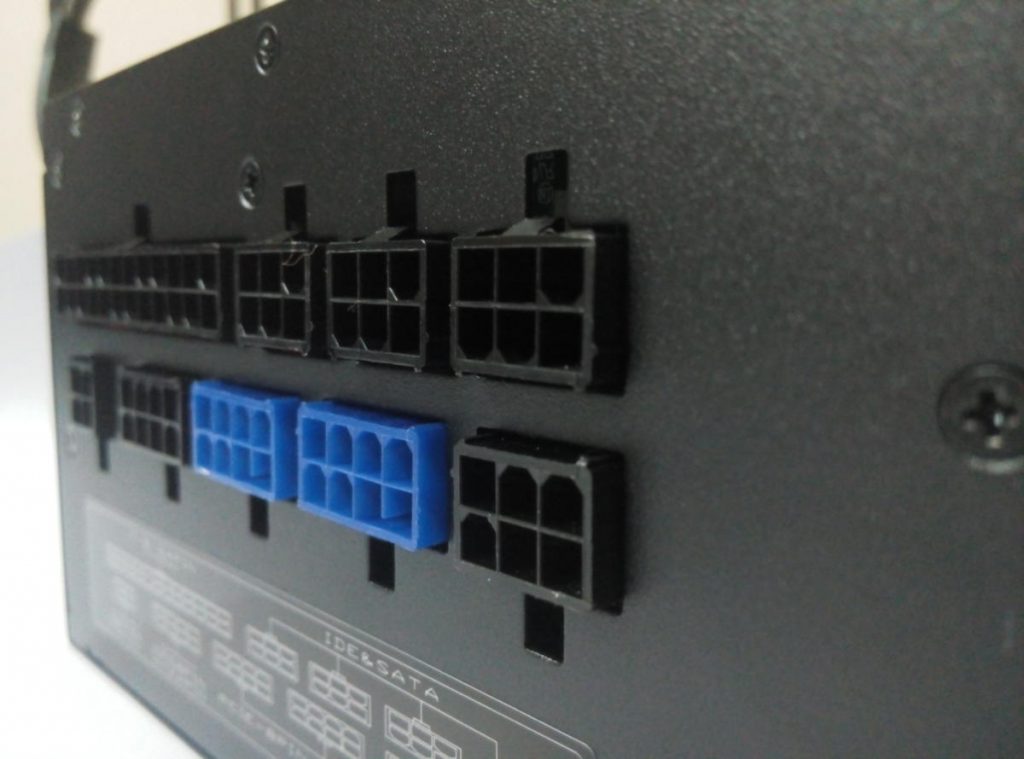
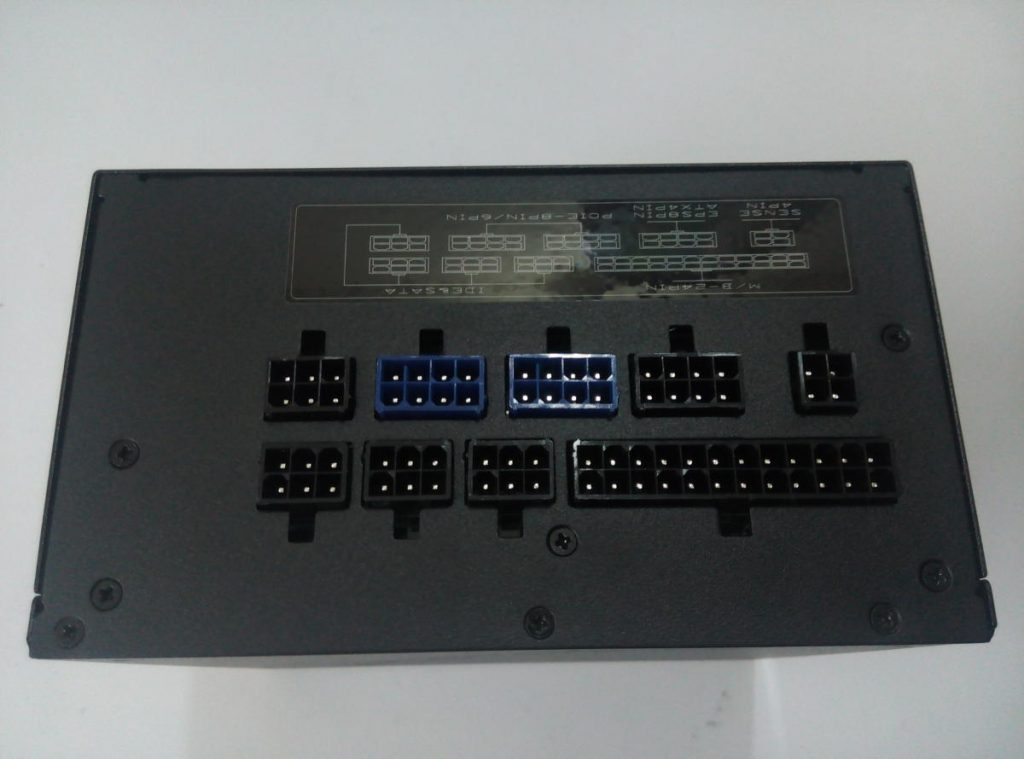
On the front, we have the cabling system designed for this power supply. No wonder SilverStone is being popular for its owned modular system outlook. The 24P power connector is at bottom right, while the PCIe connectors are identifiable in Blue. Yes, that’s how SilverStone design outlook stand out in the market. Note that, there are absolutely no drawbacks of PSU being fully-modular, which suggest, this is the best and most preferred design you got.
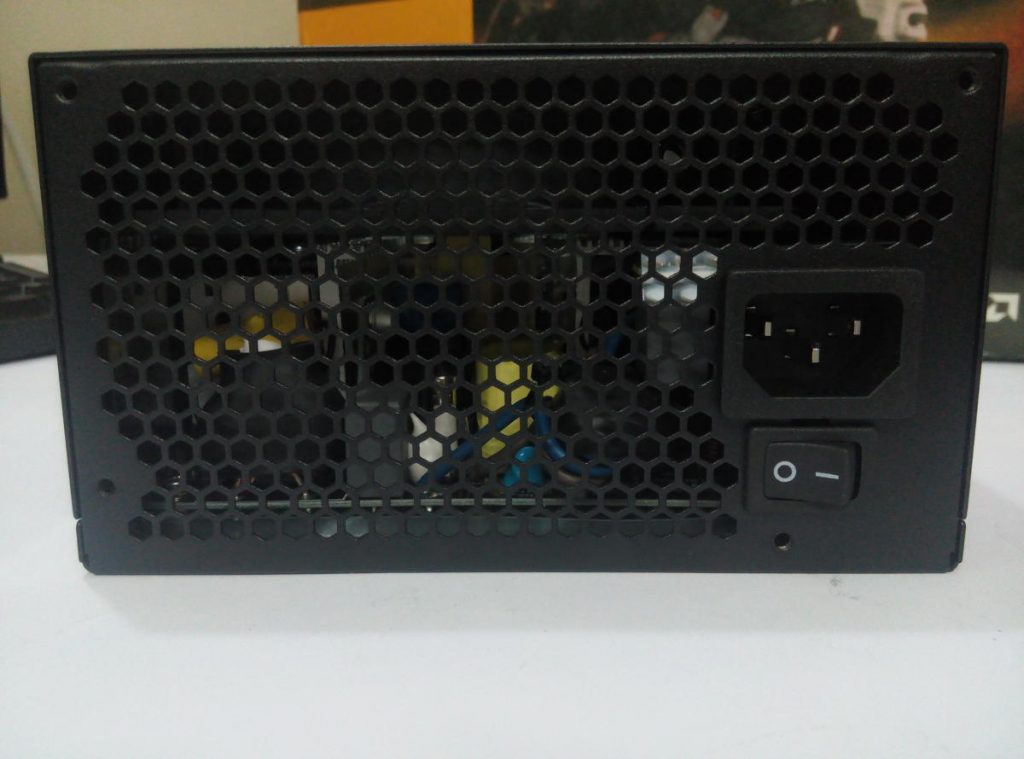
The backside displaying the look inside round holes, while the 3P AC input and Power On Button on the right.
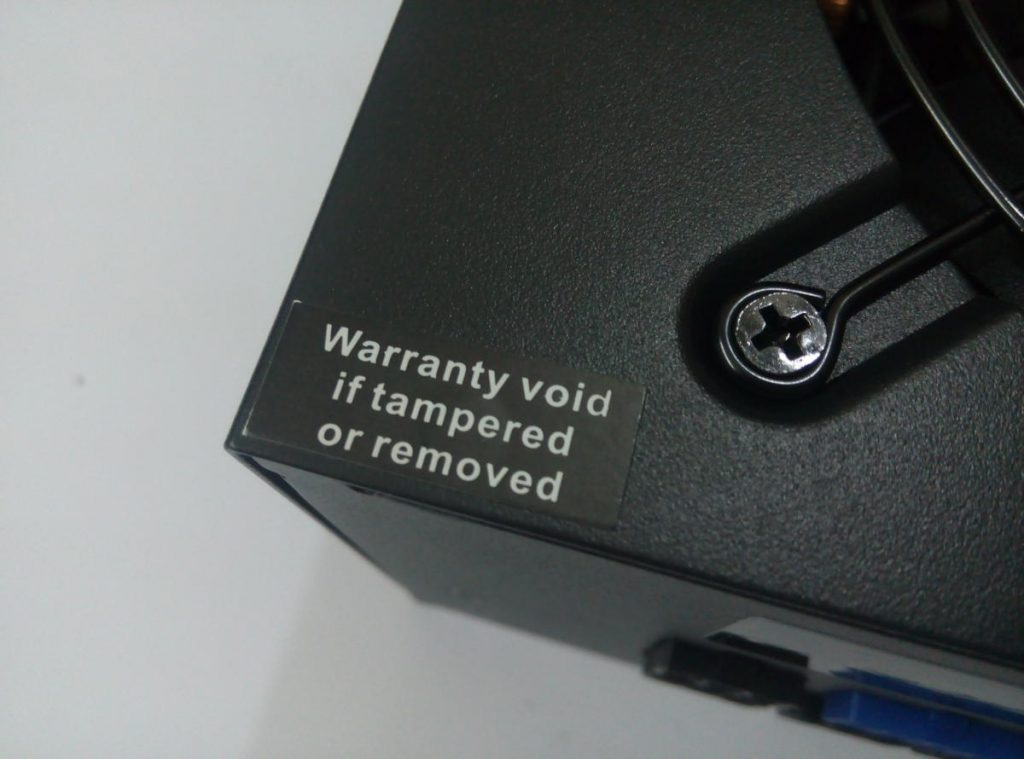
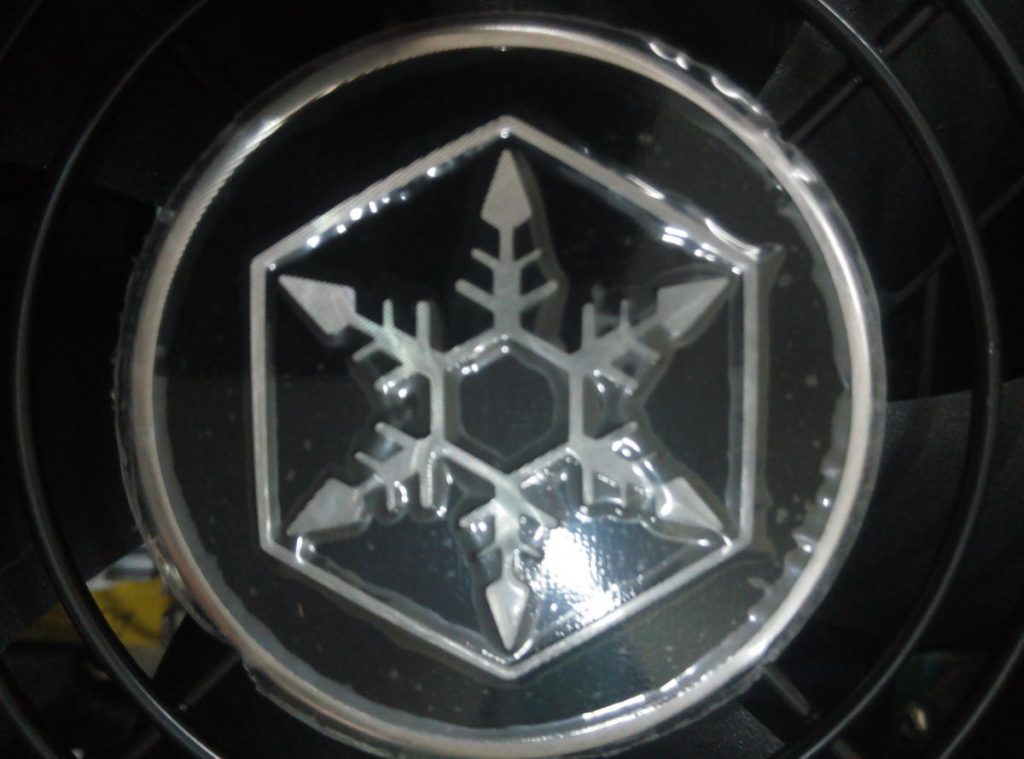
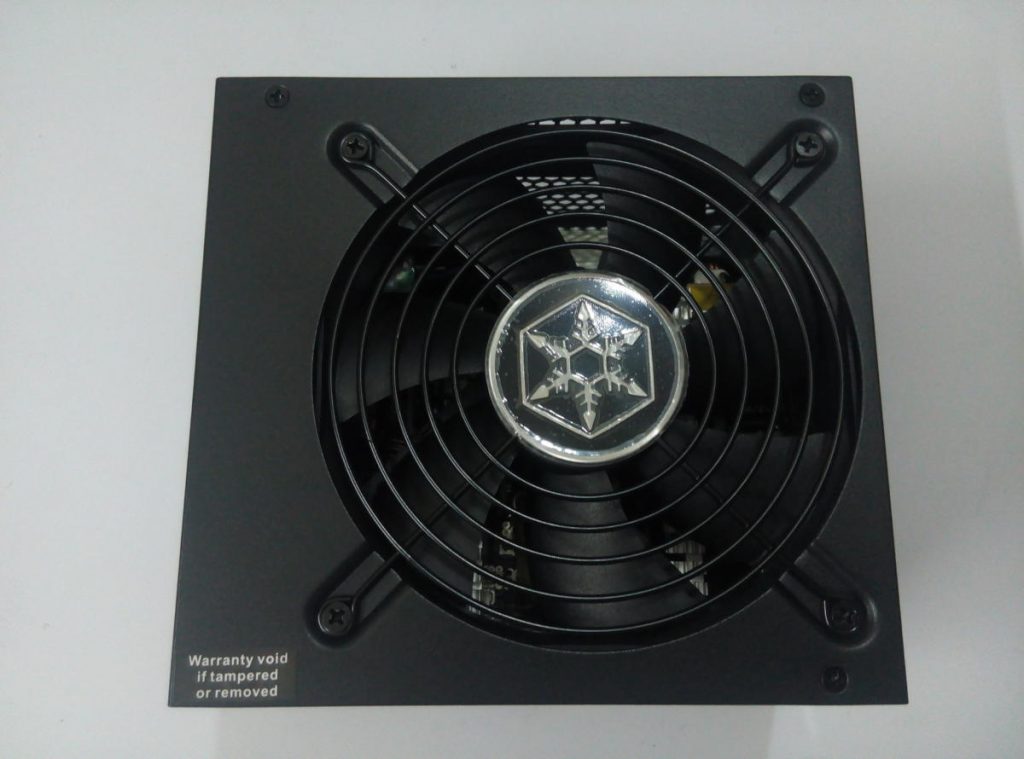
The fan side is also following with the lead-free paint in black; the grill is black, too, tightly fixed with the screws across each end. The warranty void sticker on one side area. Once you tear the seal, you lost the warranty. So be careful with that. A 120mm Fan inside the PSU peaks at 1450 RPM ensures quiet operation even at high load. Power supply being fanless during low loads I.e. 20-30% load is pleasantly a great feature.
Design: Interior
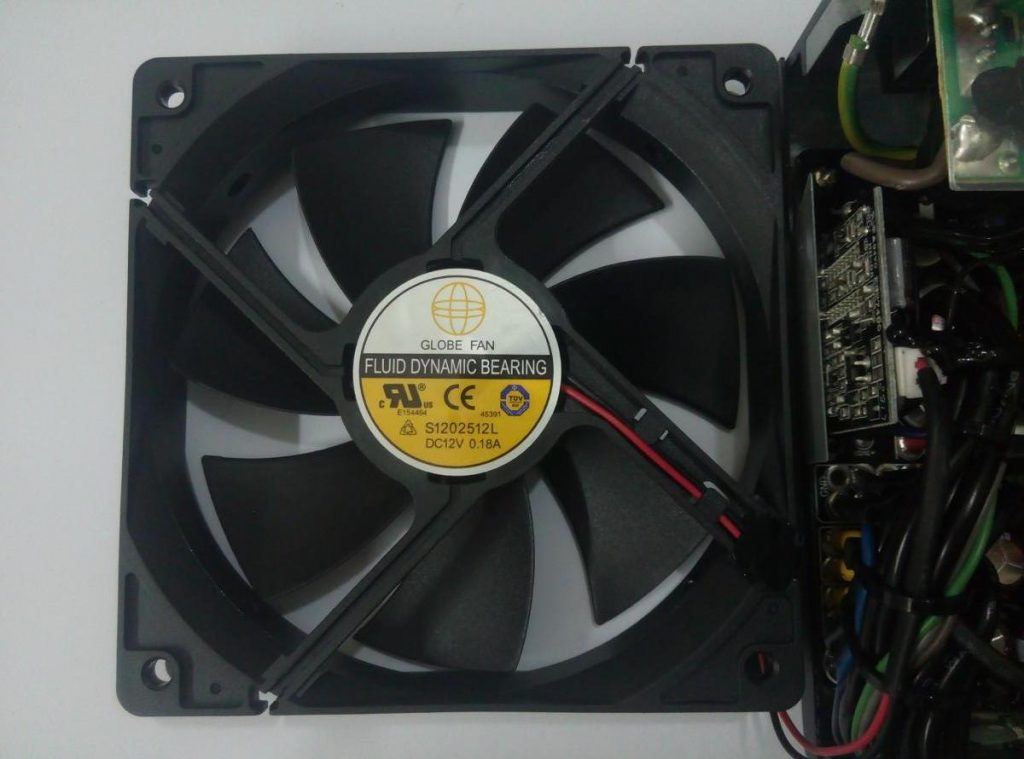

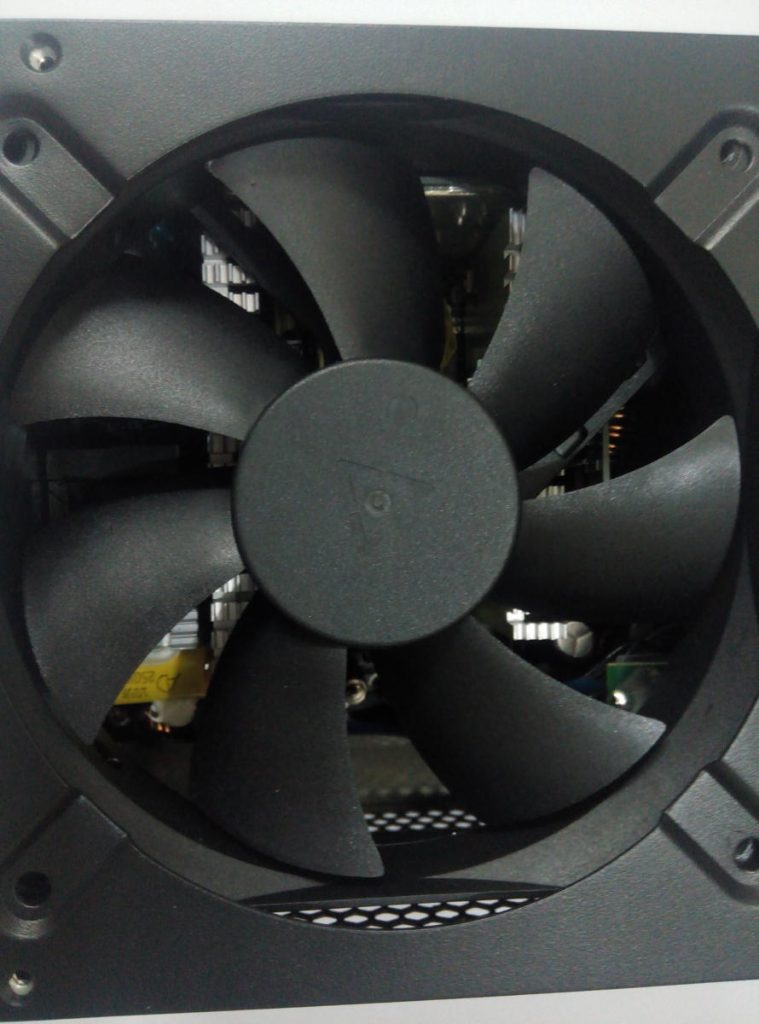
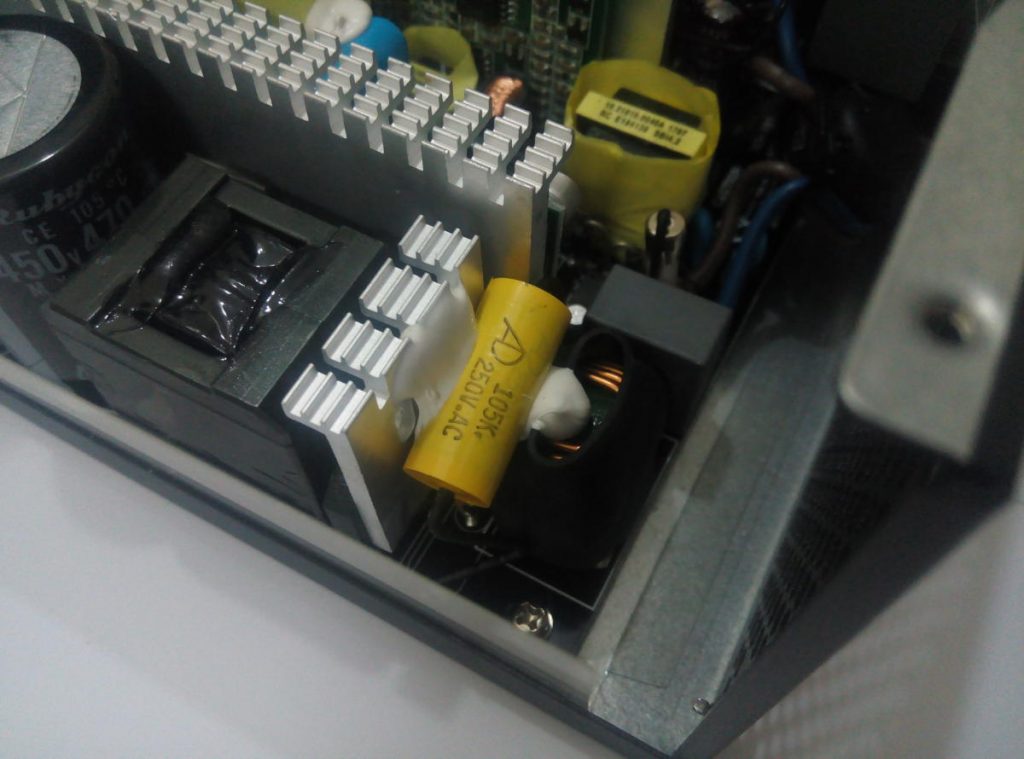
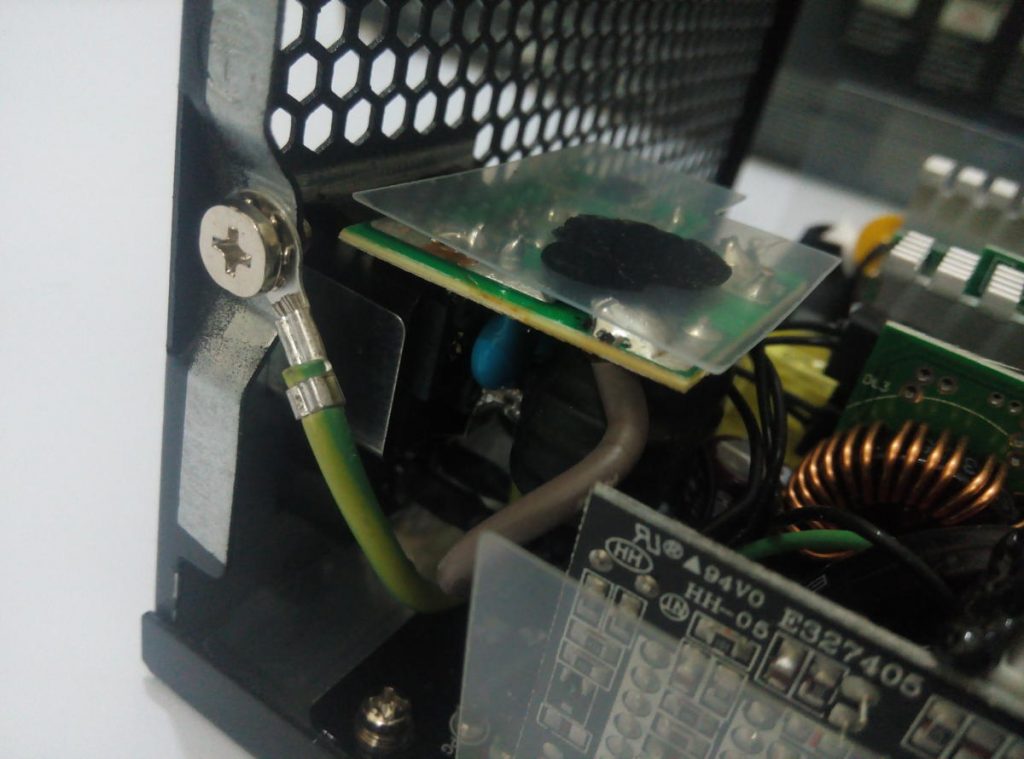
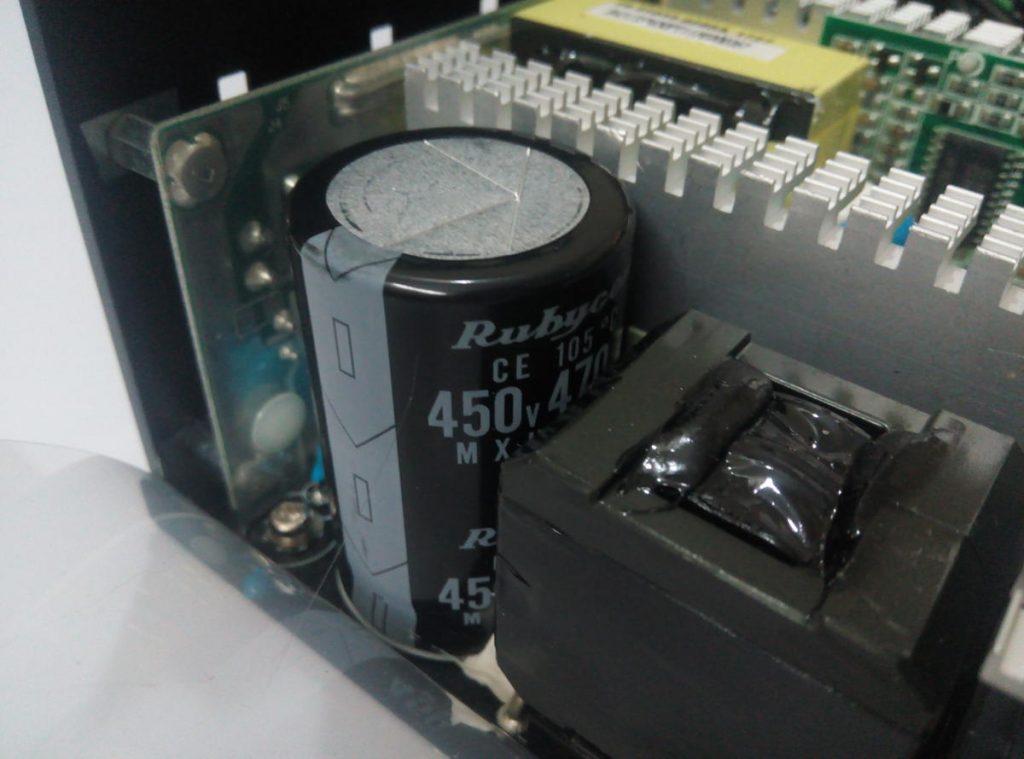
The primary side starts with the AC input that offers power Input has a y-cable soldered with the main PCB. The wiring is pretty much messed since it’s a smaller unit we were expecting the case. Making way up to primary side, we find a bridge rectifier close to aluminum heatinks, while main Capacitor is residing right next to it. It’s a Rubycon capacitor, surprisingly a different one, as Nipplon and chemi-con seen to be used more. Anyhow, Rubycon Caps are also considered as one of the good capacitors, having 450V 470uf at a specified rating up to 105C.
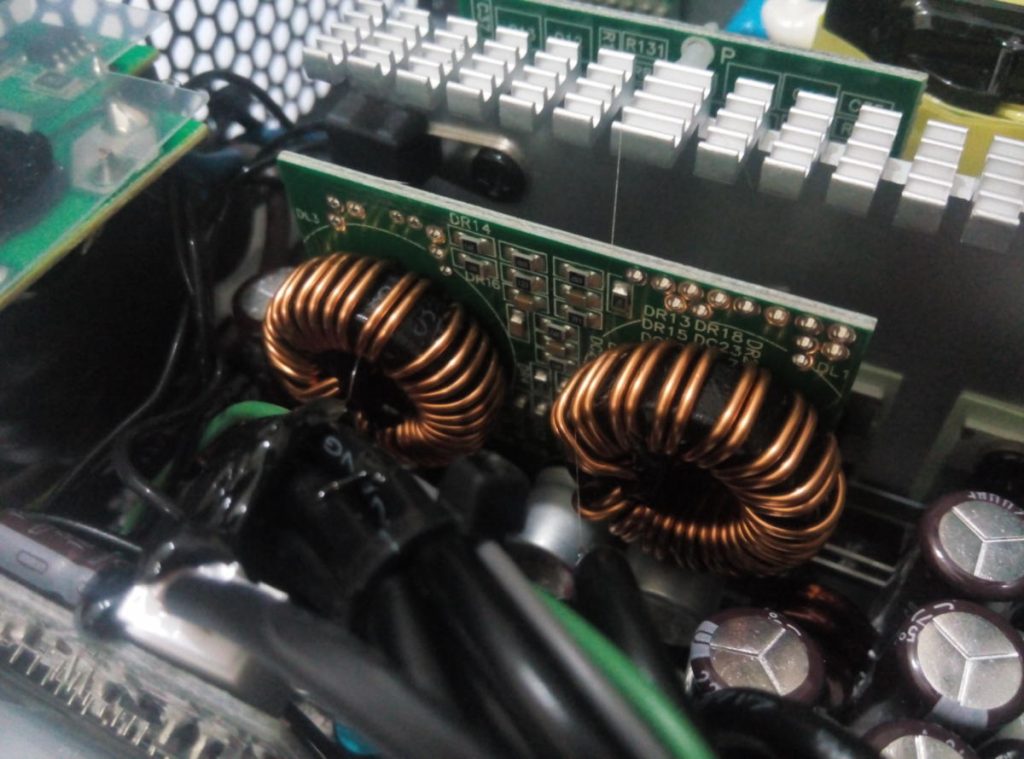
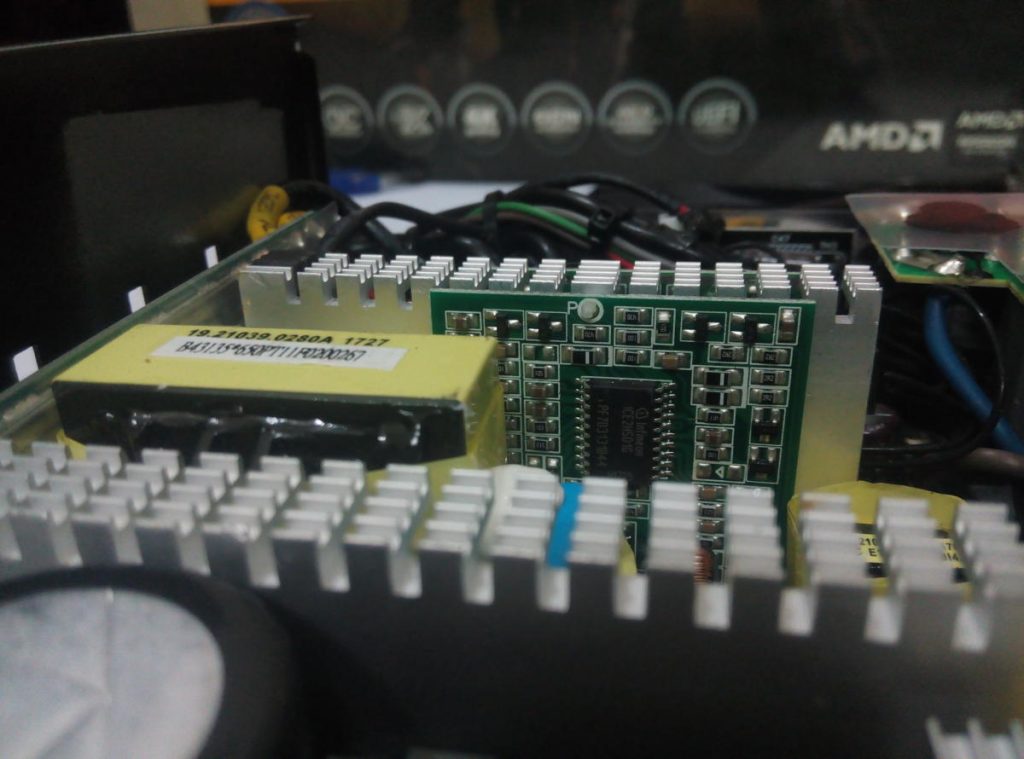
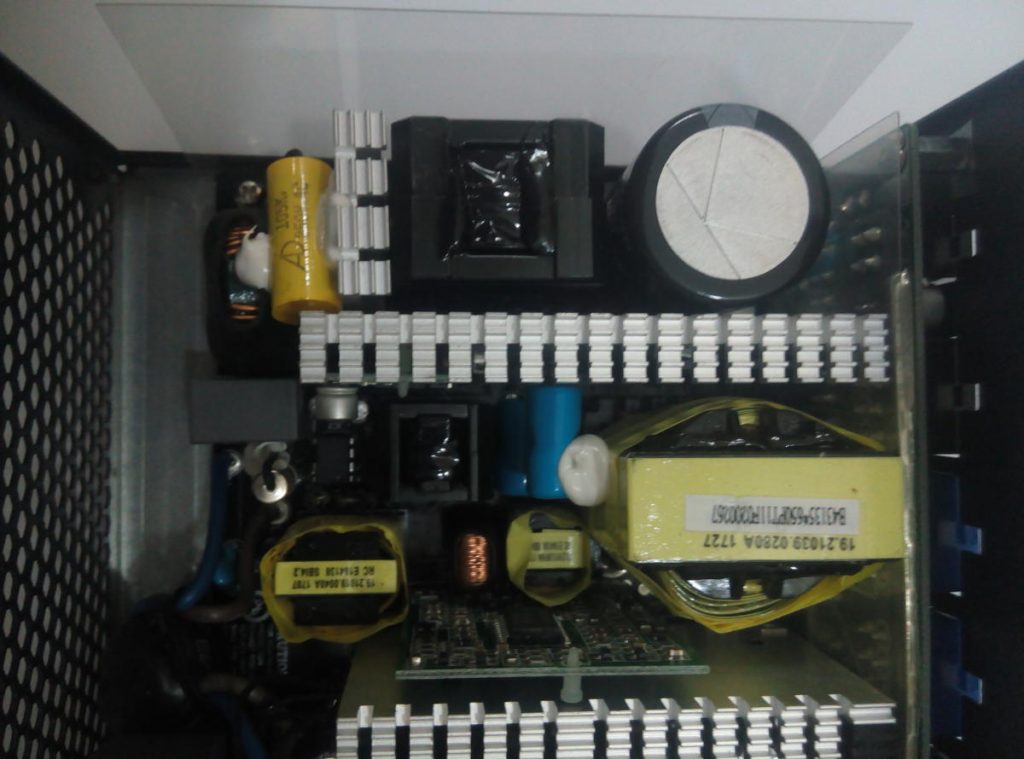
Moving towards the secondary side, we see the control unit is fixed on front of heatsink having Infenion ICE2HS01G controller, and the 3PCS01 chip, which is responsible for the active PFC. Just on left there is a transformer in yellow. Besides, there is another add-in control unit that has a DC-DC converter, located behind the Aluminum PCB for +3.3 and +5v voltages.
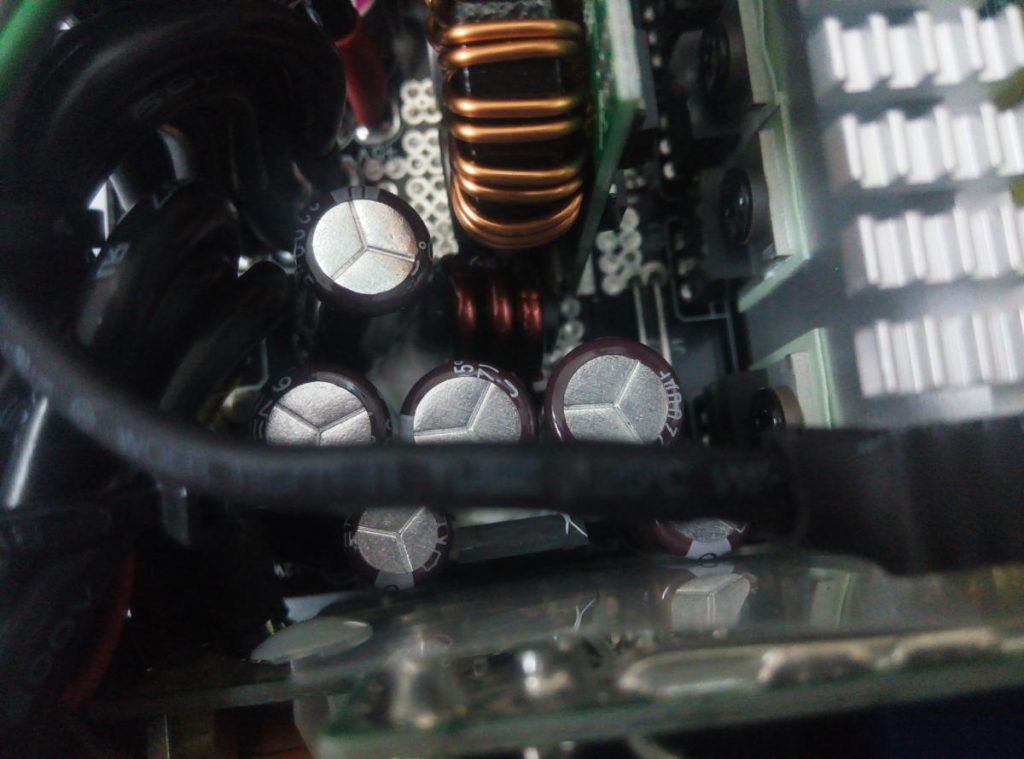
Beside the DC-DC converter, just behind the modular PCB, if we are not mistaken there are four small capacitors rating at 2200μF / 16V of Nippon Chemi-con are located. These capacitors are responsible to filter the +12V line.
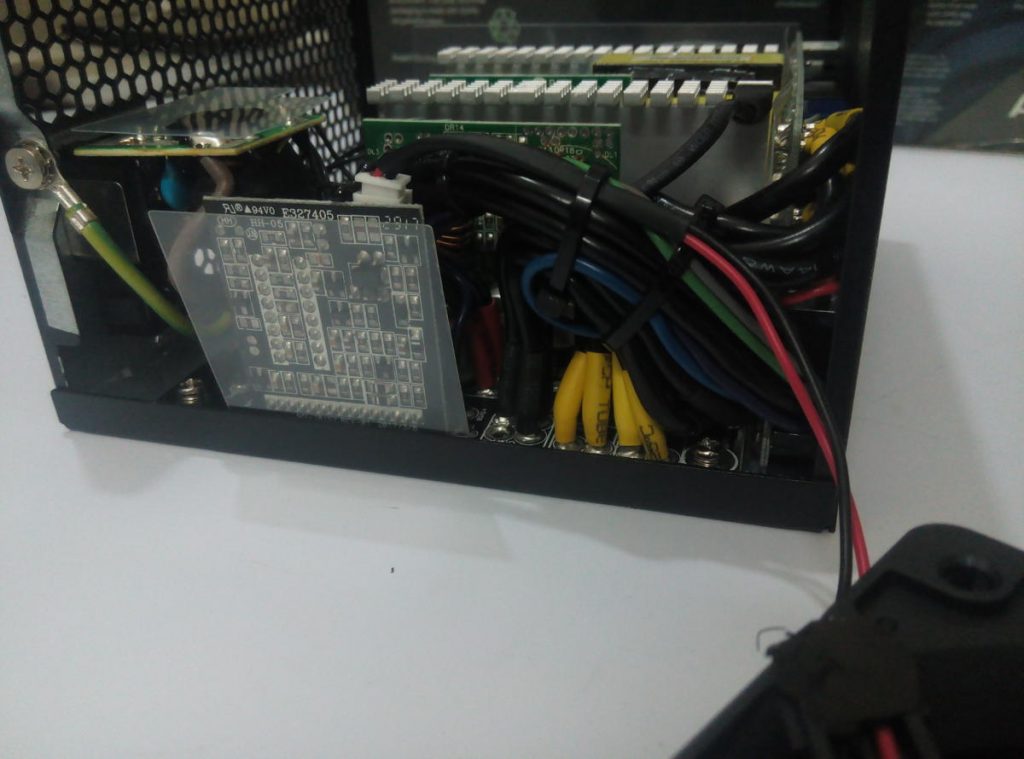
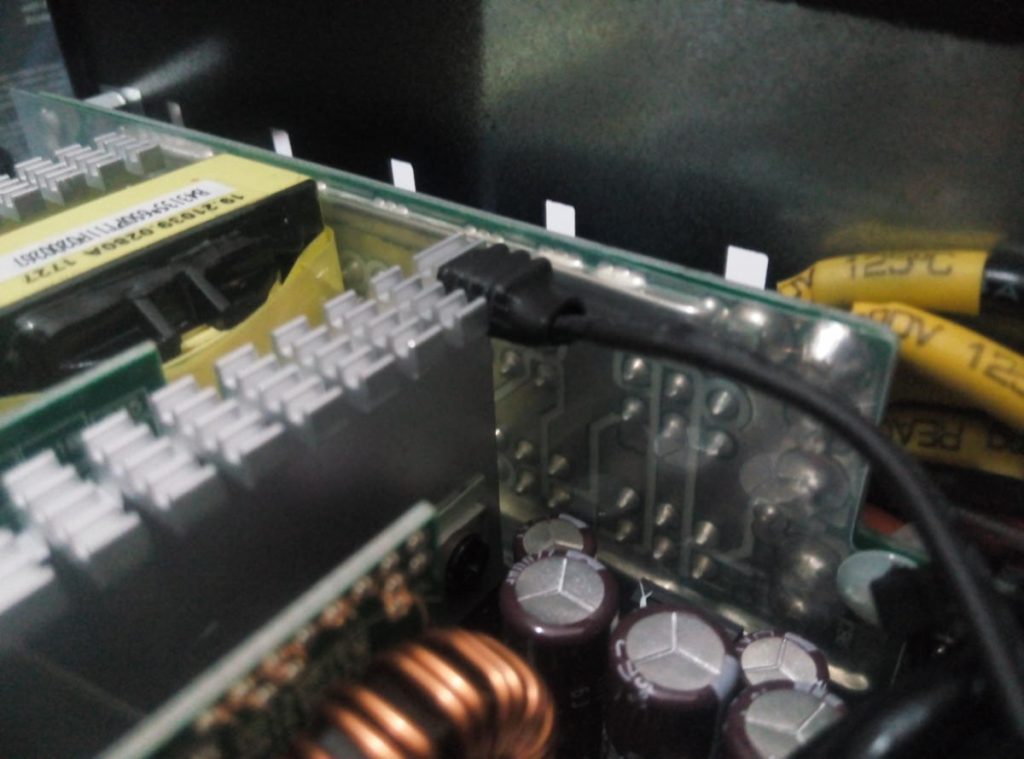
The fan cable leading to the controller PCB and connected with the header right on top. The wires for modular cabling is being soldered on the main PCB, and then they leading to the modular PCB. The overall design is very compact, as according to the Platinum platform that is built by Sirfa.
Test Bench:
- Asrock Z170 Professional i7 Gaming
- Intel Core i7 6700K 4.5 GHz
- Kingston HyperX Fury 16GB DDR4 2666 MHz RAM
- Sapphire AMD R9 290 TriX 4GB GPU
- Plextor M9PeG 256GB PCIe NVMe M.2 drive
- Seagate 3TB 7200 RPM Hard drive
- Samsung 850 EVO 256GB SATA III SSD
- SilverStone Strider 650W Platinum PSU (Reviewing Sample)
- Noctua NH-U14S Air Cooler
- Corsair Obsidian 750D Full-Tower Case

The first and foremost part of this testing is the Voltage readings by using digital meter. we took the readings via Thermaltake Dr Power II and recorded in the excel sheet. As for idle testing, we kept the system in no-usage mode or Idling and noted down the wattage it drawn from wall outlet. About load testing and efficiency, we have tortured the system via heavier synthetic applications, Prime95 and Heaven 4.0v combined. The processor, Intel Core i5 8400 6C/6T overclocked at @4.5GHz, and Graphics card, AMD R9 290, been kept at stock. During the tests, we took voltage values under maximum load condition and after taking into account, we readied them to show them in charts.
Moreover, we have utilized a few games to ascertain the power draw during the heavy gameplays. This is for groups who only interested in knowing about gaming power draw from wall. A couple of games and synthetic benchmark used to put some effective load on power supply. Note that, it is not a GPU test, the power supply needed to be put on load and in the absence of proper equipment, gaming system has been utilized.
The reason why we are not having proper equipment, the lack of funds and correspondences, it is not possible to obtain a high end testing equipment; those are expensive and out of reach completely. Therefore, the procedure of testing is very limited. I got an EU Power Monitor to ascertain the wattage being pulled from the wall. In addition, a Thermaltake Dr. Power II being used to consider the voltages.
Results
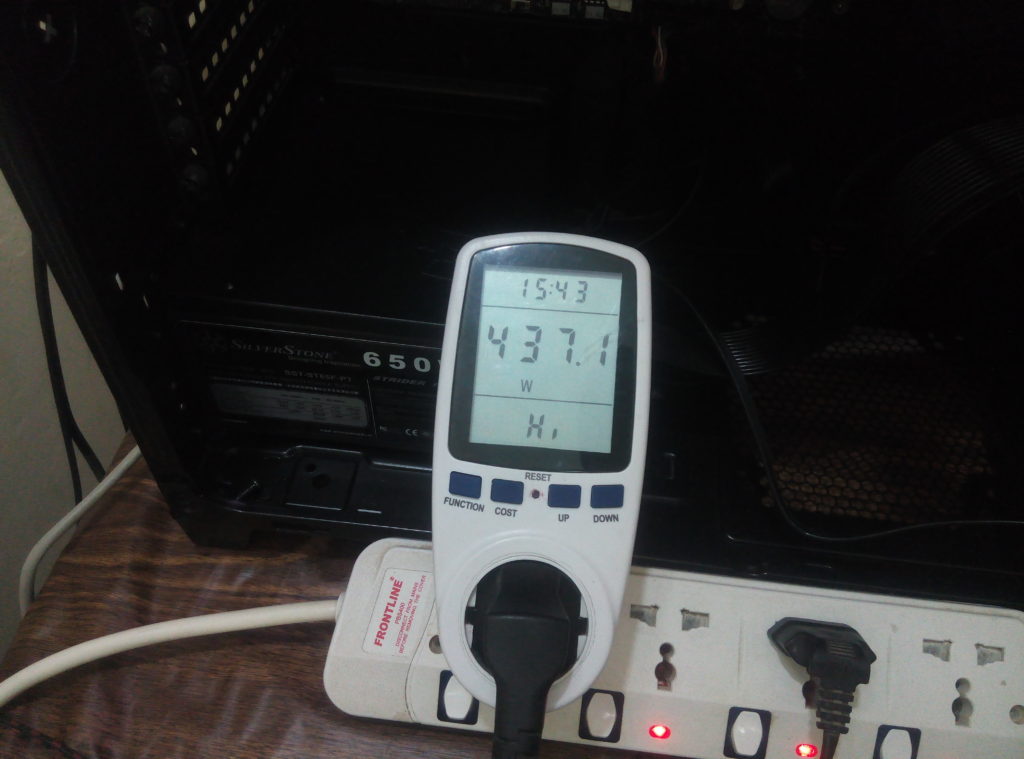
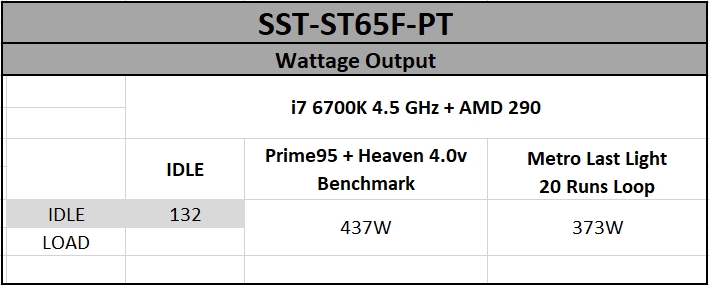
In the above tests, the power supply showed power draw of about 137 on IDLE. by triggering Prime 95 & Heaven 4.0v benchmarks simultaneously for extensive load. The ideal load on power supply is 50-60% because an efficiency usually peaks out at mid loads. The digital meter showed us the system pulled 437W from the wall as the total system power draw. This wattage is apparently passed 50% load that is about 67% power draw out of granted 650W.
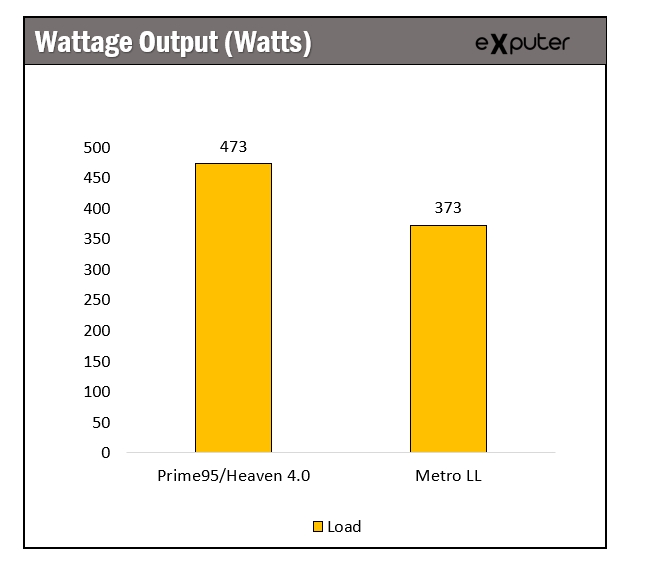
The Metro Last light is one of the heavier game on GPU and PSU. So we took that game to be tested on this power supply, to ascertain the max power draw during gameplays. We put the benchmark in a 20 runs loop and that’s actually a lot, if you ask me. As a result, the maximum power drawn from the wall outlet was 373W which apparently a 58% load on the power supply.
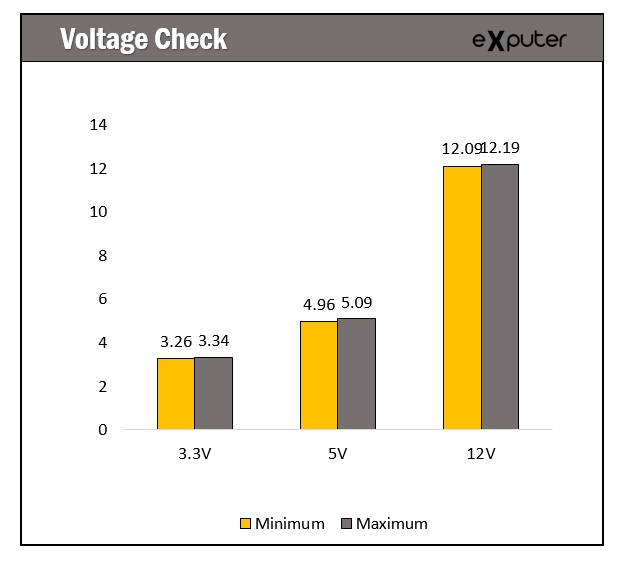
During the wattage test, I also made sure to check the voltages under idle and full LOAD; this helps to understand the power supply’s tolerance level and stability factor. Basically, under the ATX specification, the PSU voltage fluctuation should not be more than 5%, for example, on +12v rail product, the max acceptance level should remain between 11.4-12.6 Volts. Anything below from the minimum limit would sign the PSU as being problematic.
So, looking at the chart above, the voltages are just look fine. Maintaining at 12.0v on +12v rail as a max dip on the voltage cycle, is apparently, seem OK. It could be more alarming it would reach at 11.8v but hat is not the case here. Overall, the stability level seems fine.
Fan speed and Noise
One of the most important feature this power supply offers, is the fan less operation even around mid-loads. During the mid-loads, sitting at 50mm away from PSU, we tried to hear something out of the PSU, but surprisingly, there was nothing during high load. Honestly, there was nothing but the dead silent operation. Yes, at low loads, fan was not spinning at all. In fact, it is started to roll once the loads gets the height. Even then the noise was hard to catch. SilverStone has done perfectly well, to mitigate the noise by miles.SilverStone has done great effort on Platinum series. The smallest design reflects one of the great Platinum PSUs in the market. A fully modular system, that allows users to install and manage the cables separately and easily unlike the semi and traditional non-modular designs. Furthermore, the exterior has one of the great looking finishing, a matte black, that not only feels good but has a perfect outlook, too. Added to that, the noise appearance was surprisingly nothing because it was dead silent at fairly heavy load.
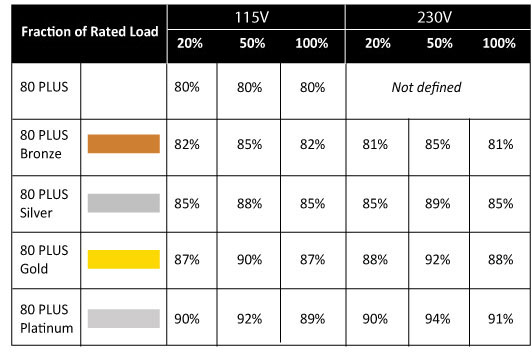
The platinum based unit offers highly efficient for whatever purpose you get them. In the above chart, you can see the efficiency levels at different load levels, but platinum PSUs reveal Its maximum efficiency when reaches at mid-loads i.e. 50% load. Strider 650W Platinum under our observation passed mid-load levels that gives us about 89-90% efficiency. Additionally, it has a good stability level, too. Even at very high load, the voltages ratings on +3.3, +5 and +12 Volts have been quite excellent.
Although, Sirfa being the OEM for Strider 650W platinum, definitely not attractive for the some, but look that way, if it is providing a good reliable unit plus, highly durable components that have a long lasting life, then why not. The said OEM also catering the other PSU in the lineup, ranges from 550W and 750W. The 850 and above, however, have a different OEM or probably comes with a different interior design.
For gamers, efficiency may or may not matters because all they do is the gaming and overclocking plus, some professional multi-tasking. So they mostly looked for continuous maximized output, particularly for long run period. In regards to this, more capable and highly durable PSU design is preferred, which has a long lasting components and totally future proof. The 650W capacity is absolutely adequate for single high-end GPU rig and with overclocking, the extra 100W should be reserved for future perspective, even then it’d still backup 100W extra, well, that’s a lot if you ask me.
This platinum based design is decent and well made. Selling for $124 (at the time of review) on Amazon, Strider ST65F-PT offers platinum efficiency and modular design. Besides that, fanless mode as dead silent at fairy high loads is worth looking at. The international market is loaded with high quality power supplies, which we believe, Strider 650W platinum is one of them, and with 5 years warranty it is definitely a great buy. All in all, It’s a good, mid-capacity, high performer PSU that could serve you for long run.
Recommended
Score - 9
9
Thanks! Do share your feedback with us. ⚡
How can we make this post better? Your help would be appreciated. ✍


